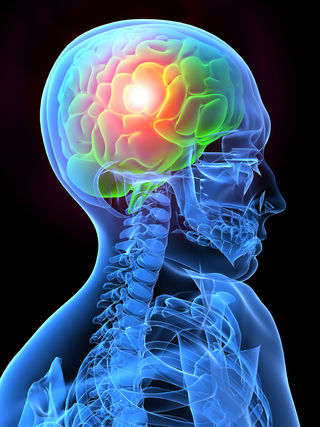Neuroscience
How to get the most out of medical treatment for pain
Psychological approaches can help boost your pain treatment response
Posted September 24, 2014
Many people think about pain psychology as being a way to help them cope with pain. While true, the important part of the equation is often overlooked: that psychological factors can predict how well pain treatments actually work. Thoughts and emotions are so powerful that they influence pain intensity, how well medical treatments work, including medications, surgery, and physical rehabilitation.

Pain has a medical basis, and it is influenced by a multitude of factors such as how much our mind focuses on pain and our feelings of helplessness about it. It’s important to equip individuals with skills that help shift their mind’s focus toward self-soothing, and so they can engage in ways to help themselves. These skills will not eliminate the medical basis of pain or the pain itself, but it give people a way to steer mind and body toward self-soothing relief. This turns out to be a critical part of the formula. If the mind remains focused on pain and feeling of helpless or ‘worst-case scenario’ for current or future pain, it amplifies pain and suffering and is linked to poorer results for medical treatments and greater need for medications and interventions.
Brain imaging (fMRI) studies have shown that attention to pain, anticipation of pain, and negative emotions related to pain—all amplify pain at the neural level and engage the same areas of the brain associated with pain processing.
Nobody chooses to have chronic pain. Human neurobiology is hardwired to focus on pain and to seek relief. Even so, know that there are things you can do to steer mind and body adaptively, to help address pain-specific worry and focus. A pain psychologist will help you learn tools that dampen pain processing in your central nervous system, thereby supporting you and your response to a wide variety of medical and physical treatments for pain. In this way, pain psychology (or behavioral medicine for pain) is not just about coping with pain: it’s about shaping mind and toward relief.
(Note: see January 2020 post on Addressing the Needs of A Nation in Pain for new developments on rapid access to behavioral medicine treatment for pain).
References
1. Darnall BD. Psychological Treatment for Patients with Chronic Pain ©2018 American Psychological Association Press: Washington, D.C. (193 pages) ISBN-13: 978-1433829420
2. Darnall BD. Reducing the Global Burden of Chronic Pain. Global Solutions Journal. March 2019, Issue 4: 243-8. https://abo.tagesspiegel.de/media/view/2019/03/gsj_4_e-mag_1198.pdf
3. Burton AK, Tillotson KM, Main CJ, Hollis S. Psychosocial predictors of outcome in acute and subchronic low back trouble. Spine. 1995;20(6):722-728.
4. Picavet HS, Vlaeyen JW, Schouten JS. Pain catastrophizing and kinesiophobia: predictors of chronic low back pain. Am J Epidemiol. 2002;156(11):1028-1034.
5. Spinhoven P, Ter Kuile M, Kole-Snijders AM, Hutten Mansfeld M, Den Ouden DJ, Vlaeyen JW. Catastrophizing and internal pain control as mediators of outcome in the multidisciplinary treatment of chronic low back pain. Eur J Pain. 2004;8(3):211-219.
6. Darnall BD. The Tao of Pain. Spirituality & Health. (Jan/Feb 2018 issue; pp 50-55)
7. Darnall BD. The Opioid-Free Pain Relief Kit ©2016. Bull Publishing: Boulder, CO. (130 pages)
8. Severeijns R, Vlaeyen JW, van den Hout MA, Weber WE. Pain catastrophizing predicts pain intensity, disability, and psychological distress independent of the level of physical impairment. Clin J Pain. 2001;17(2):165-172.
9. Smeets RJEM, van Geel AC, Kester AD, Knottnerus JA. Physical capacity tasks in chronic low back pain: what is the contributing role of cardiovascular capacity, pain and psychological factors? Disability & Rehabilitation. 2007;29(7):577-586.
10. Helmerhorst GT, Vranceanu AM, Vrahas M, Smith M, Ring D. Risk factors for continued opioid use one to two months after surgery for musculoskeletal trauma. J Bone Joint Surg Am. 2014;96(6):495-499.
11. Wang Y, Cao DY, Remeniuk B, Krimmel S, Seminowicz DA, Zhang M. Altered brain structure and function associated with sensory and affective components of classic trigeminal neuralgia. Pain. 2017 Aug;158(8):1561-1570.
12. Hubbard CS, Khan SA, Keaser ML, Mathur VA, Goyal M, Seminowicz DA. Altered Brain Structure and Function Correlate with Disease Severity and Pain Catastrophizing in Migraine Patients. eNeuro. 2014 Dec 30;1(1):e20.14.


